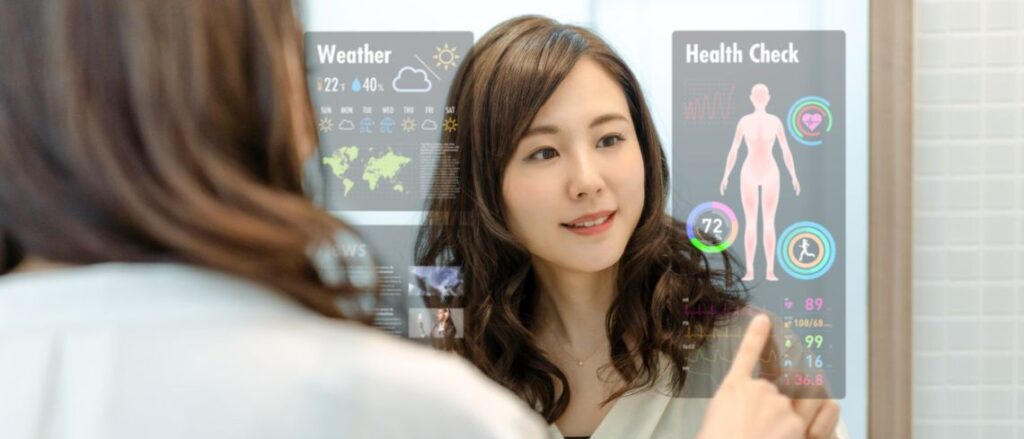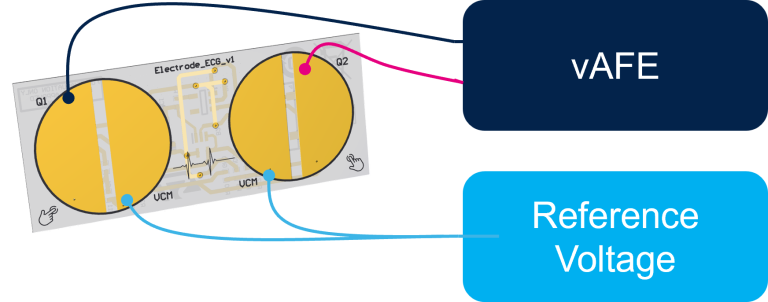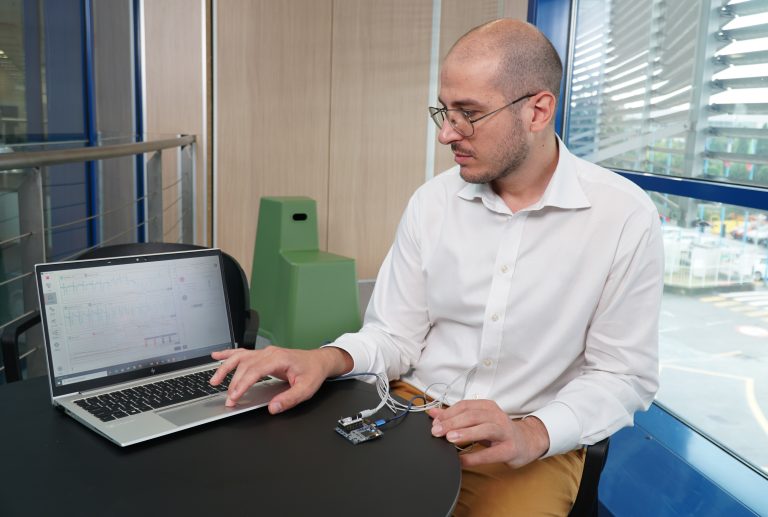
The ST1VAFE3BX is ST’s newest biosensor. It combines and synchronizes biopotential inputs with an ST accelerometer and a machine learning core, thus opening the way for the next generation of healthcare wearables needing to rein in their energy consumption. Additionally, its tiny package (2 mm x 2 mm x 0.74 mm) helps reduce costs and PCB space. The overall design also requires less power, thus alleviating the need for a more complex system architecture. Yet, the ST1VAFE3BX retains the finite state machine and machine learning core of the ST1VAFE6AX that came before it, ensuring the ability to provide AI at the edge.
Those attending electronica 2024 can see the new biosensor in real-world applications, such as a real-time portable heart rate monitoring and ECG patch system co-developed with Dupont.
ST biosensors, the marriage of vAFE, an accelerometer, and AI
What is a biosensor?
Biosensors are nothing new and serve increasingly essential applications. In essence, they are traditional sensors like thermometers, potentiometers, hygrometers, or barometers, but they can track biological signals like heartbeats, respiration, cerebral activity, etc. Avid readers of the ST Blog will remember that we have been covering the use of our sensors and technologies in health care for years. However, the challenges inherent to medical applications remain arduous because they demand extreme accuracy, reliability, and strict regulations. For instance, a consumer watch can afford to miss tracking a few steps without repercussions. The same is far from true for an ECG medical device, which would yield unusable and potentially dangerous data as they could lead to detrimental decisions.
What is a vAFE?
To tackle this challenge and ensure more accurate measurements, ST is now shipping the first biosensor embedding a vertical analog front-end (vAFE) combined with an ultra-low-power accelerometer, the ST1VAFE3BX. As the name indicates, the vAFE is an analog circuit inside the application-specific integrated circuit (ASIC) that amplifies and filters the information captured by the sensing element to detect biopotential signals for specific applications (e.g., ECGs).

When we investigate the vAFE, we see that the system enables engineers to connect electrodes in differential modes to measure electrostatic potentials. The vAFE in our biosensors is, therefore, an extension of the technology introduced for sensing touch or swiping gestures, as it can now detect much more complex signals. It is thus a testament to how our expertise in sensors permeates our entire portfolio.

Why add an accelerometer and AI
Biosensor block diagram: combining a vertical analog front-end (vAFE) for detecting biopotential signals and a 3-axis ultralow-power accelerometer for motion tracking.
Biosensor block diagram: combining a vertical analog front-end (vAFE) for detecting biopotential signals and a 3-axis ultralow-power accelerometer for motion tracking and AI core (MLC, FSM)
While the vAFE makes the detection of biopotential information possible, the inertial sensor provides contextualization to help further clean up the signal and ensure the machine learning core, whose algorithm depends on high-quality inputs, offer accurate results. For example, as the person with the portable application moves, the accelerometer detects it and cancels or corrects the data captured to account for it. Hence, for the first time in the industry, bio-sensing, inertial-sensing, and AI came together in the ST1VAFE3BX to track brain functions, heart rates, electro-cardio signals, as well as hand or eye movements, thus opening the door to new types of products.
What are the fruits of this union?
After releasing the ST1VAFE3BX, some ST partners adopted the new device and shared that it stands out as an excellent solution for gesture recognition, heart rate monitoring, cognitive performance, and neurological health in wearable devices. Leveraging this advancement, they could significantly enhance the functionality and user experience.
ST1VAFE3BX, the union of biosensing and ultra-low power
What does ultra-low-power mean?
The ST1VAFE3BX consumes 50 µA in high-performance mode, meaning with both vAFE and accelerometer. Comparatively, competing solutions need six times that or more for the power consumption overall. Moreover, the finite state machine and machine learning core of the ST1VAFE3BX allow for continuous operation with minimal energy use. Any AI operations running on the sensor need significantly less energy than if running on the main microcontroller, thereby extending battery life and enhancing overall efficiency. Conversely, competitors must run all inference operations on the microcontroller, which must, therefore, stay always on. Often, the form factor must remain small to be practical, which means a smaller battery and, therefore, a more energy-conscious approach to the overall design.
What can an ultra-low-power biosensor do?

Besides announcing the arrival of the ST1VAFE3BX, we are also showcasing numerous demo applications. For instance, ST created a board with two electrodes and our newest device, all of which fit on top of a SensorTile.box PRO or the Professional MEMS Board STEVAL-MKI109V3. This is probably the simplest, fastest, and most cost-effective way to experiment with the ST1VAFE3BX. Users can immediately run an ECG application by placing two index fingers on the demo board. Hence, testing the capabilities of the new device against competing solutions is possible in a matter of minutes.

Developments from customers or engineering schools also show how to use our biosensors. When placed on a person’s chest, wrist, or head, it measures heart rate variability to identify stress and fatigue, among other things. When combined with an IMU, the ST1VAFE3BX can help create a system that monitors whether athletes are at risk of a concussion. Beyond the typical electrocardiogram, the sensor could also work in electroencephalography (EEG), seismocardiography (SCG), and electroneurography (ENG).
Why is the industry so optimistic?
It’s easy to see how the ST1VAFE3BX can revolutionize the wearable market for healthcare and well-being applications, where efficiency meets innovation. Our device is not just a sensor. It’s a comprehensive solution for health monitoring and activity tracking, offering a blend of precision, integration, and efficiency that sets a new standard for personal monitoring devices.
Experts know that it is rare to see so many proof-of-concepts so early in the life cycle of a new device. Indeed, given the number of applications already cropping up, it’s clear that there’s more to the ST1VAFE3BX than a commercial biosensor. Behind the gains in efficiency lies a new world of possibilities. It’s why we are also trying to sensitize our partners to privacy and security issues. ST recognizes the potential behind this ability to track very personal information. We are, therefore, talking with our partners and will work with the industry to advance the cause of securing biodata and protecting users’ privacy.






